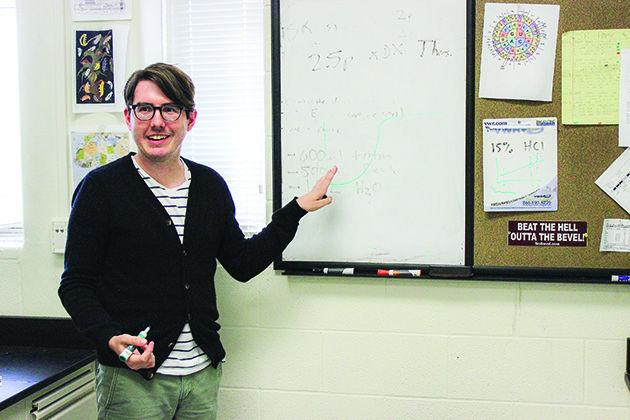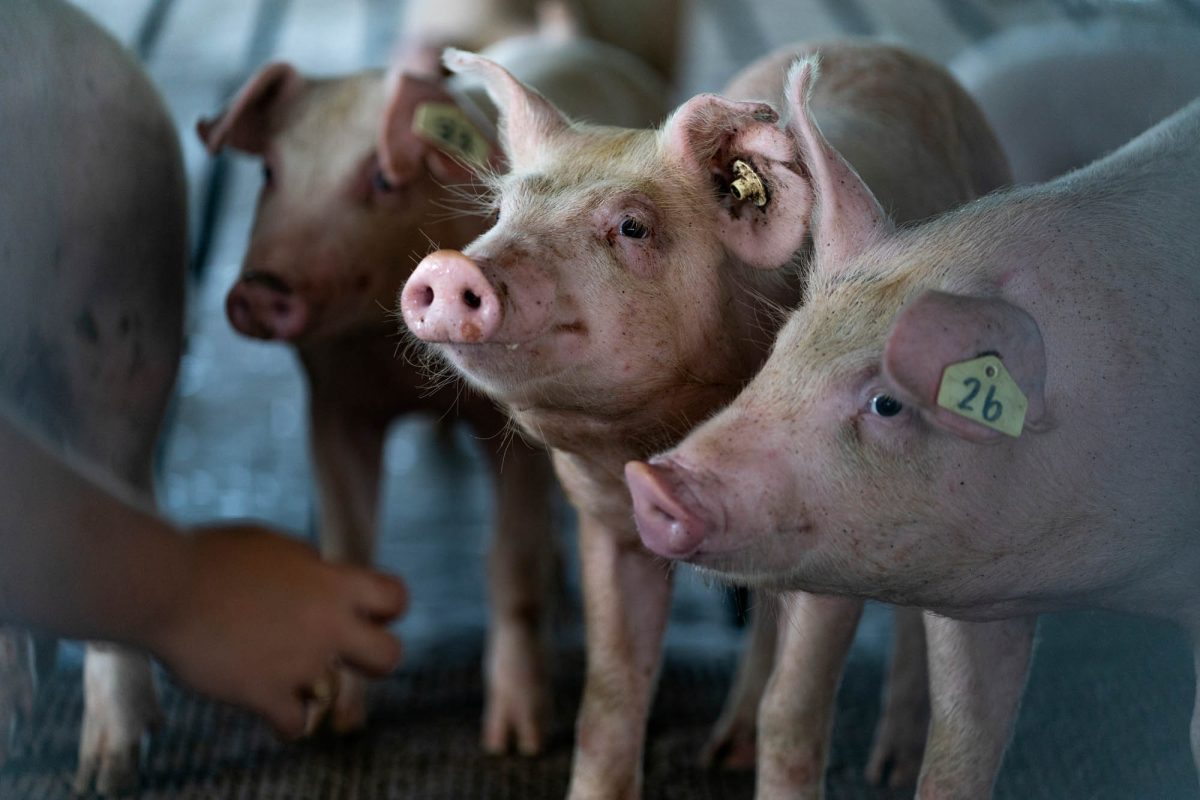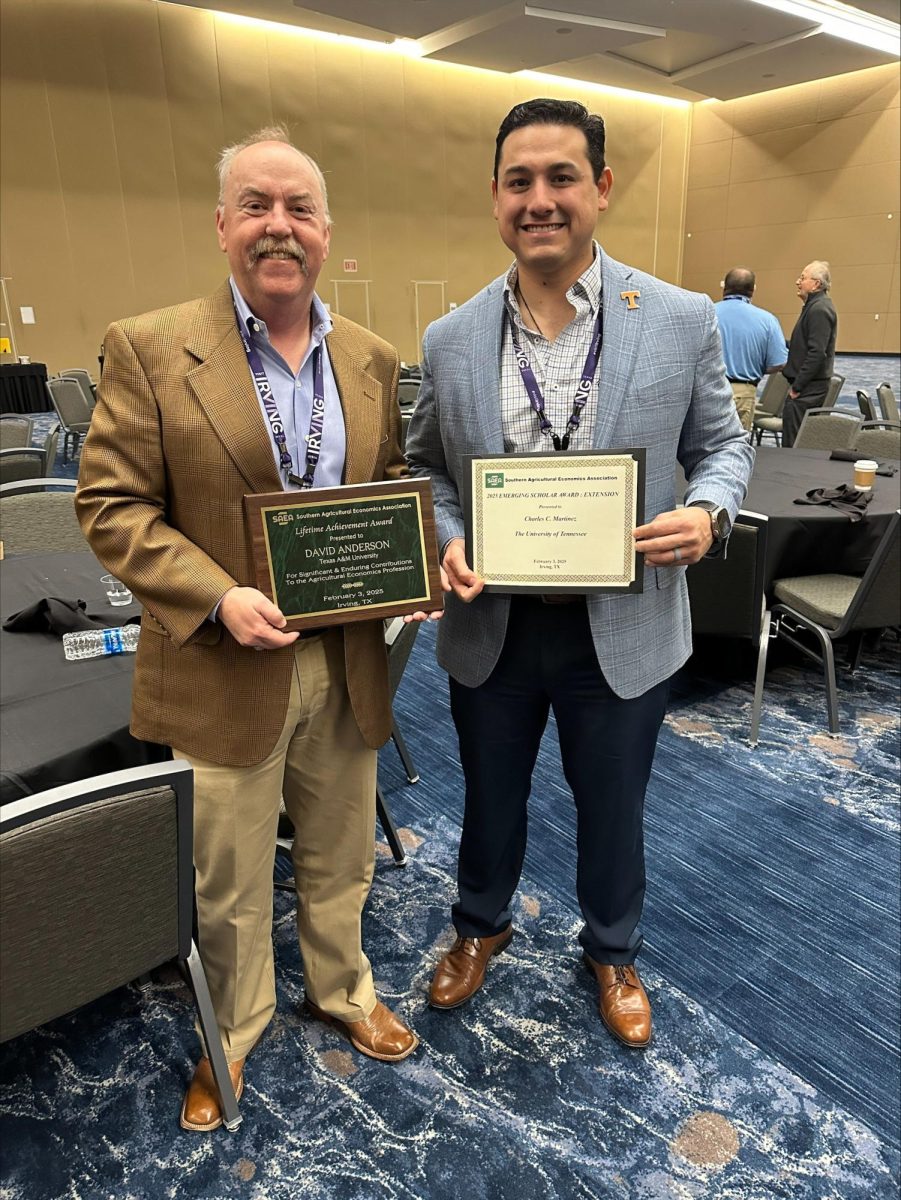New genetic findings by a team of A&M researchers could lead to a better understanding of why people get cancer and other genetically linked diseases.
The human genome collectively holds all the genes that humans have, however half of the genome is just the same set of bases — adenine, cytosine, guanine and thymine — repeated over and over again, said Keith Maggert, associate biology professor. Because it repeats, that half has never before been sequenced.
“I’m sure you’ve heard the human genome project where they sequenced the entire human genome, which is just a bald-faced lie,” Maggert said. “They’ve sequenced half of it. Why didn’t they sequence the other half? It’s because it’s highly repetitive. It’s the same sequence over and over and over again. Like, AAGAG for a million bases. And so how do you sequence that? You can’t sequence that.”
Until now, Maggert said scientists couldn’t discuss the sequence of this part of the genome beyond talking about how homogenous it is and how many copies of the sequence “AAGAG” there are.
John Aldrich, biology doctoral student, has invented a new way of sequencing this other half of the genome. By tweaking a technique normally used to measure the length of telomeres — the ends of chromosomes — Aldrich found he could actually count the number of copies of the sequence found along the genome.
“It sort of worked really well the first time,” Aldrich said. “It was just a thing I did over a weekend or something to see if it worked, and it worked.”
Maggert said the unknown half of the genome could have secrets that would help scientists unlock understanding between DNA and disease. For example, scientists know that in cancer cells, the number of copies of the sequence on the repetitive half of the genome shrunk.
“We know that that copy number matters,” Maggert said. “You probably have a different amount than I do, and so there’s variance within the population. We know that in some disease conditions, it grows or shrinks.”
The idea that the amount of DNA can shrink is a novel idea of its own, Maggert said.
“John’s work really challenges the assumption that our genome is stable,” Maggert said. “We think that the genes that we’re born with are the genes that we die with, and that is clearly not true. We had some inkling of that. Now we can measure how much that’s not true.”
Maggert said overeating could also affect your genome, and the chromosomes of a 60-year-old person who overeats would be very different than the chromosomes of the same person had they been eating well.
When a person overeats, the number of copies of the sequence shrinks, just like in a cancer cell.
“We know that obesity is probably the second-biggest risk factor to developing cancer,” Maggert said. “Diet is one of the big ones right now, especially with this growing obesity epidemic. We see the rates of cancer going up and the connection between nutrition, diet, obesity and cancer is not very clear, and I don’t think that it’s all the mechanism that John is working, but certainly that’s a significant fraction of it.”
Anthony Comuzzie, Class of 1981 and genetics scientist at the Texas Biomedical Research Institute, said studying the relationship between diet and genetics is a top issue today.
“I think this is a very hot and important topic if you think about what is the most persistent and biggest environmental factor that our genetics get exposed to on a daily basis, and that is our diet,” Comuzzie said.
Nancy Turner, research professor in the Department of Nutrition and Food Science, has conducted research on diet and its effect on colon cancer, specifically prevention. She said environmental factors like diet play a much larger role in influencing the development of cancer than genetics itself.
Turner said her office works to spread information and awareness to the public about the importance of a healthy diet to prevent diseases, but scientific information can only go so far.
“We do whatever we can to try to make people aware, but it really comes down to individual choices,” Turner said. “People have to take that information in and make sense of it for themselves and decides they’re going to do something, much like smoking cessation.”
Maggert said Aldrich’s could open the door for experiments to help answer questions about treatments for cancer and other chronic diseases.
“There’s a lot of medications and treatments directed at trying to cure cancer or treat cancer, but most of them are empirical,” Maggert said. “We don’t know how they work, we just give them to people and people seem to get better. I think there is a lot of utility in that, if our goal is to reduce human suffering that works. But I think we can do much more if we understood how these things work, so that we can be more intelligent in how we design these things.”
Understanding half of the genome just isn’t enough, Maggert said.
“In my opinion, we’re not going to understand how the genome contributes to diseases, cancer or any number of diseases until we understand the whole thing,” Maggert said. “We can’t look at just half of it and say, ‘Well let’s just deal with this until we’re done.’ We have to understand the whole thing as a whole unit. Up until now, we haven’t been able to.”
Unexplored genome could be key to disease studies
October 14, 2014
Photo by Photo by Allison Bradshaw
Biology graduate student John Aldrich said the technique he uses makes copies of the base sets on the non-coding part of the genome’s DNA so researches can count the base copies.
0
Donate to The Battalion
$2790
$5000
Contributed
Our Goal
Your donation will support the student journalists of Texas A&M University - College Station. Your contribution will allow us to purchase equipment and cover our annual website hosting costs, in addition to paying freelance staffers for their work, travel costs for coverage and more!
More to Discover










